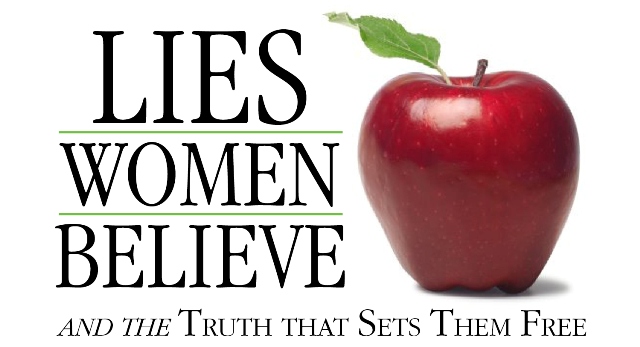Y’all should celebrate at the end of this post because we did it! We finished the Lies Women Believe review– this is the last week. Speaking of which, if you have any ideas for which book I should do next, I’m open to hearing them. Next week will be a break of sorts, since I’ll be reviewing Man Enough: How Jesus Redefines Manhood by Nate Pyle, which I’m excited about sharing with you.
But, let’s get this over with, shall we?
The last section of the book– “Walking in the Truth”– is divided into two chapters. The first one, “Countering Lies with the Truth,” explicates the process that Christian women are supposed to use when they encounter one of Satan’s lies, something that Nancy has not explicitly spelled out for us yet. Unfortunately, this process isn’t even remotely innocuous. It’s poison.
We have seen that the progression toward bondage begins when we listen to Satan’s lies … Once we permit Satan’s lies to gain an entrance into our our minds, the progressions continues as we dwell on those lies. If we do not immediately reject deceptive ways of thinking, but allow ourselves to entertain them in our minds, we will begin to believe them. (244)
What this does is make it impossible for women to evaluate what they’re being told by Nancy and other conservative Christians. If they’re exposed to a new idea– an idea they haven’t heard in full before, say like a biblically-based argument in favor of marriage equality– they are required to immediately reject it before they could even begin to give a new idea the engagement and attention it might deserve. Nancy is point-blank telling us that a knee-jerk dismissal is the only possible reaction to anything they’ve been told is wrong, and if they don’t, they will believe it.
That last bit is especially pernicious. It is possible to fully hear out an argument, fully investigate it, and still conclude that you don’t agree with its premises or conclusions. But conservative Christians can’t risk anyone going through a process of listening and engaging, because much of that culture is based on smoke and mirrors that won’t stand up to honest examination.
For the length of this book, Nancy has never really explained what she thinks “The Truth” is– she just sort of assumes that we get it, and it is likely that many of her readers don’t need to be told what it is, since “The Truth” is this nebulous and yet somehow self-evident idea that everyone just intuitively gets.
However, this chapter makes it clear what Nancy means by it: the Truth is Bible verses taken out of context and layered with conservative evangelical interpretations that function as adages for Christians. When she says we’re supposed to counter Satan’s lies with “The Truth,” she means we’re supposed to quote Bible verses to ourselves (246-47). However, like many other evangelicals, she’s incapable of admitting that it’s not that simple, that these verses come loaded with the way conservative Christians have been applying them (sometimes extraordinarily badly) for the last fifty years. Because, of course, they hold to the “plain meaning of Scripture” and deny that, in fact, no such thing exists.
Nancy rounds out this chapter with a personal story on how she herself overcome a series of “lies,” and how she used the Truth to eventually forgive a person who had wronged her.
I knew I could not wait until I felt like forgiving– that I had to choose to obey God, and that my emotions would follow sooner or later. There on my knees, with my emotions still battling, I finally waved the white flag of surrender. (249)
Reading this, it suddenly hit me why I’ve had a problem with conservative Christian definitions of “forgiveness,” and it’s because this model of forgiveness is just gaslight yourself into ignoring your feelings that a particular person is unsafe. That’s what it takes to “restore relationships” in many Christian circles: someone does something wrong to you, they “seek forgiveness,” and you are obligated to let it go and continue exposing yourself to someone with a demonstrated willingness to hurt you regardless of what your instincts say.
The last chapter is a rehash of all the things Nancy’s already said, so I won’t go over them again. The “Resources” section recommends the now-defunct Exodus International, the book A Full Quiver, child-rearing books that advocate abuse like Shepherding a Child’s Heart, and offers no resources for sexual abuse victims that are widely recommended by professionals (not even The Wounded Heart).
Final conclusion on Lies Women Believe: it teaches concepts that can and does result in murdered women, recommends resources that advocate child abuse, and expressly forbids women from seeking other avenues of help. Every copy should be burned and Moody should issue an apology for ever publishing it.


